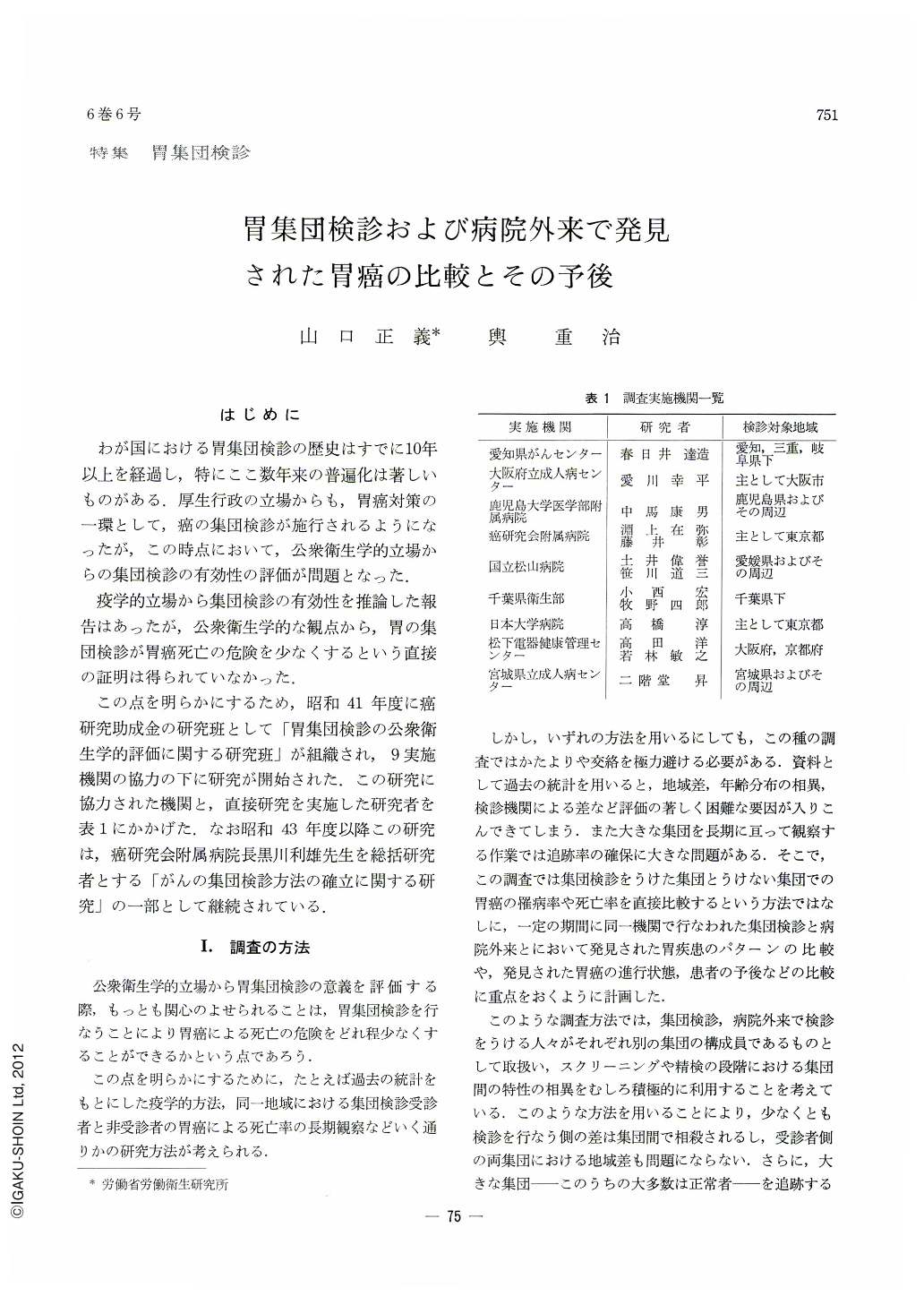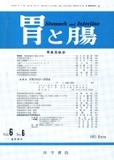Japanese
English
- 有料閲覧
- Abstract 文献概要
- 1ページ目 Look Inside
はじめに
わが国における胃集団検診の歴史はすでに10年以上を経過し,特にここ数年来の普遍化は著しいものがある.厚生行政の立場からも,胃癌対策の一環として,癌の集団検診が施行されるようになったが,この時点において,公衆衛生学的立場からの集団検診の有効性の評価が問題となった.
疫学的立揚から集団検診の有効性を推論した報告はあったが,公衆衛生学的な観点から,胃の集団検診が胃癌死亡の危険を少なくするという直接の証明は得られていなかった.
この点を明らかにするため,昭和41年度に癌研究助成金の研究班として「胃集団検診の公衆衛生学的評価に関する研究班」が組織され,9実施機関の協力の下に研究が開始された.この研究に協力された機関と,直接研究を実施した研究者を表1にかかげた.なお昭和43年度以降この研究は,癌研究会附属病院長黒川利雄先生を総括研究者とする「がんの集団検診方法の確立に関する研究」の一部として継続されている.
Patients of gastric cancer detected both at the gastric mass survey and in the out-patient clinic have been followed up in order to clarify the significance of gastric mass survey from the viewpoint of public health. At the same time, 23,171 persons having undergone gastric mass survey at nine institutions from April 1967 to March 1968 have been investigated to find out features, if any, of mass survey examinees, in whatever way departing from those undergoing gastric examinations at the out-patient clinic.
Of the latter group, 6,350 patients were chosen from those examined in the out-patient clinics for Internal Medicine in the afore-mentioned institutions.
Study of questionnaires filled in by all the persons both at the gastric mass survey and out-patient clinic revealed that constituents of mass survey examinees were different from those of the hospital not only in their age groups and reasons for undergoing examination, but also in the history of previous mass survey and subjective complaints.
Gastric mass survey was also found to deal with other strata of examinees qualitatively different from those at the hospital, besides increasing the number of potential patients at the out-patient clinic.
Gastric diseases, including ulcer, polyp and carcinoma, were as often seen among those in need of thorough check-up subsequently to mass survey as among the group of the out-patient clinic. On the other hand, gastric cancer in its early stage was seen in a relatively higher rate in the former. Contraindication to surgical operation was seen naturally in fewer cases, and resectability rate, so much better.
Depth spread of cancer in the survey group was predominantly in its earlier phase of cancer progress. The two-year survival rate after the detection of gastric cancer was 95 per cent in the grades Ⅰ and Ⅱ of depth invasion; 70 per cent in Ⅲ, and 35 per cent in grade Ⅳ or more. The over-all two-year survival rate in the survey group was 73 per cent, while that in the group of Out-patient clinic, 32 per cent, the prognosis being better in the former group.

Copyright © 1971, Igaku-Shoin Ltd. All rights reserved.


